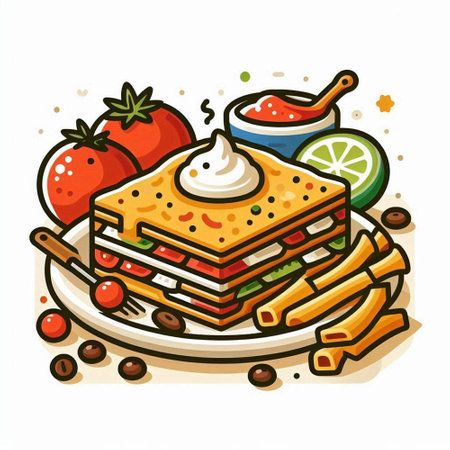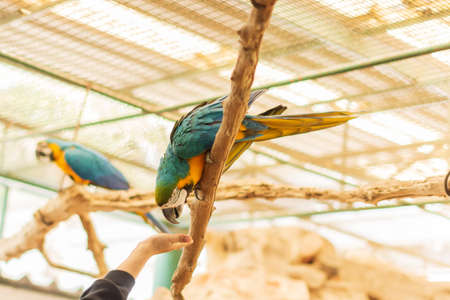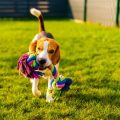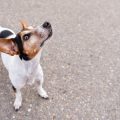1. Introduction: Why Diet Matters for Pet Birds
Pet birds bring so much joy and color into our homes, but their health and happiness depend a lot on what they eat every day. Just like people, birds need a balanced diet to stay active, playful, and healthy. If you’re a bird owner in the United States, understanding which foods are safe or unsafe for your feathered friend is an important part of caring for them.
Proper nutrition helps pet birds maintain strong immune systems, shiny feathers, good energy levels, and even positive moods. On the other hand, an improper diet can lead to serious health problems such as obesity, vitamin deficiencies, weak bones, or even toxic reactions. Birds have unique nutritional needs that often differ from other pets like cats or dogs, so it’s crucial to know what should and shouldn’t go into their food bowl.
Why a Balanced Diet Is Essential
A balanced diet provides your bird with all the essential nutrients they need—proteins, vitamins, minerals, carbohydrates, fats, and water. Each plays a special role in supporting their overall well-being:
| Nutrient | Main Benefit | Common Sources |
|---|---|---|
| Protein | Muscle growth & repair | Eggs (cooked), legumes |
| Vitamins & Minerals | Immune support & bone health | Fresh fruits & vegetables |
| Carbohydrates | Energy for daily activities | Whole grains, cooked pasta |
| Fats | Feather quality & brain function | Nuts (unsalted), seeds (in moderation) |
| Water | Hydration & digestion | Clean drinking water daily |
The Risks of an Unbalanced Diet
If pet birds don’t receive the right nutrients or accidentally eat harmful foods, they can develop issues like feather plucking, lethargy, frequent illnesses, or digestive troubles. In some cases—especially with toxic foods—even small amounts can be dangerous or life-threatening.
Your Role as a Bird Parent
As a responsible bird parent, it’s up to you to make smart choices about what goes into your pet’s cage or treat dish. Knowing the difference between safe and unsafe foods is key to helping your bird live a long and happy life. In the next parts of this article series, we’ll explore exactly which foods are safe treats and which ones should always be avoided.
2. Safe Foods for Pet Birds
Feeding your pet bird a healthy, well-balanced diet is essential for their long-term health and happiness. In the United States, you can find a wide variety of safe foods for birds at your local grocery store or farmer’s market. Below, we’ll break down some of the best options you can offer your feathered friend.
Recommended Fruits
Many fresh fruits are both safe and nutritious for pet birds. They provide important vitamins and add variety to your bird’s diet. Remember to always wash fruits thoroughly and remove pits or seeds from certain fruits before serving.
| Fruit | Serving Tips |
|---|---|
| Apples (seedless) | Remove seeds; cut into small pieces |
| Bananas | Peeled; sliced or mashed |
| Berries (blueberries, strawberries, raspberries) | Whole or halved; avoid added sugars |
| Melons (cantaloupe, watermelon, honeydew) | Seedless; cut into chunks |
| Mango (pit removed) | Peeled and diced |
| Pears (seedless) | Peeled and chopped; remove seeds |
| Oranges (in moderation) | Peeled and sectioned; avoid too much citrus |
Bird-Safe Vegetables
Vegetables are another fantastic source of nutrition for birds. Dark leafy greens, crunchy veggies, and colorful options can be served raw or lightly steamed (without salt or oil).
| Vegetable | How to Serve |
|---|---|
| Kale, spinach, Swiss chard | Chopped; raw or lightly steamed |
| Carrots | Grated or diced; raw or cooked without seasoning |
| Broccoli & cauliflower florets | Bite-sized pieces; raw or steamed |
| Pumpkin & squash (no seeds) | Baked or steamed, cubed |
| Zucchini & cucumber | Sliced or diced; raw |
| Sweet potato (cooked only) | Peeled, cooked, cooled, and cubed |
| Bell peppers (all colors) | Sliced or chopped; remove seeds |
Healthy Seeds and Grains
Seeds and grains should make up only a portion of your bird’s diet. Choose high-quality options and avoid mixes with artificial colors or added sugar.
| Seed/Grain Type | Description/Serving Suggestions |
|---|---|
| Millet sprays (in moderation) | A favorite treat for many species |
| Cooked brown rice or quinoa | Cooled before serving |
| Oats (plain rolled oats) | A small pinch as a treat |
| Chia seeds/flaxseeds | Add sparingly to fresh foods |
| Buckwheat & barley (cooked) | Cooled before serving |
Avoid Seasonings and Additives
Always serve foods plain—never with salt, butter, oil, garlic powder, onion powder, or other seasonings. Birds have sensitive digestive systems that don’t tolerate additives common in human food.
Fresh Water Is Essential
No matter which safe foods you offer your bird, always ensure they have access to fresh, clean water every day.

3. Unsafe Foods and Common Household Hazards
Keeping your pet bird safe starts with knowing which foods and everyday household items can be harmful. Many common foods and substances found in American homes are toxic to birds—even tiny amounts can cause serious health problems. Here’s what you need to avoid:
Foods That Are Toxic to Birds
| Food or Substance | Why It’s Dangerous |
|---|---|
| Avocado | Contains persin, which can cause heart damage and respiratory distress in birds. |
| Chocolate | Theobromine and caffeine in chocolate are highly toxic to birds, causing seizures, vomiting, and even death. |
| Caffeine (coffee, tea, soda, energy drinks) | Even small amounts can lead to cardiac issues, hyperactivity, and death. |
| Alcohol | Affects the liver and nervous system; just a sip can be fatal for birds. |
| Onions & Garlic | Can cause digestive irritation and red blood cell damage, leading to anemia. |
| Salt | Tiny amounts can upset electrolyte balance and cause kidney failure. |
| Dried or raw beans (especially kidney beans) | Contain hemagglutinin, which is very toxic unless thoroughly cooked. |
| Xylitol (artificial sweetener) | This sugar substitute is extremely dangerous, causing rapid insulin release and possible liver failure. |
| Moldy or spoiled foods | Molds produce toxins that are highly harmful to birds’ delicate systems. |
| Fruit pits & apple seeds | Contain cyanide compounds that are poisonous to birds if ingested. |
Common U.S. Household Hazards for Pet Birds
- Teflon/Non-stick Cookware Fumes: Overheated non-stick pans release fumes (PTFE) that are deadly to birds—never let your bird near the kitchen when cooking!
- Scented Candles & Air Fresheners: Strong scents and chemicals can irritate your bird’s respiratory system and may be toxic.
- Tobacco Smoke: Secondhand smoke contains toxins that harm birds’ sensitive lungs; keep smoking materials far away from pet areas.
- Pesticides & Cleaning Products: Many sprays, disinfectants, and bug killers contain chemicals unsafe for birds—even fumes can be hazardous.
- Houseplants: Some popular indoor plants (like lilies, philodendron, pothos) are toxic if chewed on by curious birds.
- Batteries & Small Objects: Birds love to chew! Swallowing batteries or small metal/plastic pieces can cause poisoning or blockages.
- Poorly Stored Medications: Over-the-counter or prescription drugs dropped on the floor or left out are a major hazard if picked up by a bird.
A Quick Reference Table: Dangerous Foods & Substances for Birds
| Toxic Food/Substance | Examples & Where Found at Home |
|---|---|
| Caffeine & Chocolate | Coffee mugs, energy drinks, chocolate bars, hot cocoa mix in kitchens/living rooms |
| Xylitol (artificial sweetener) | Sugar-free gum/candy in bags or purses; some peanut butters in pantries |
| Teflon Fumes (PTFE) | Kitchens with non-stick cookware, waffle makers, irons |
| Scented Aerosols & Candles | Laundry rooms, bathrooms, living rooms with air fresheners/candles plugged in or burning nearby |
| Pesticides/Cleaners | Beneath sinks, cleaning supply closets, sprayed on plants or floors |
Remember: Birds are much more sensitive than dogs or cats! Always double-check new foods or products before introducing them into your bird’s environment. When in doubt, ask your avian veterinarian for guidance to keep your feathered friend safe and healthy.
4. Reading Food Labels and Avoiding Hidden Dangers
When caring for your pet bird, it’s important to look beyond the obvious foods and pay close attention to the ingredients in packaged products. Understanding food labels can help you keep your feathered friend safe from hidden dangers that aren’t always obvious at first glance.
How to Read Ingredient Lists
Ingredient lists on packaged foods are arranged in order of quantity, with the first ingredient being the most abundant. For pet birds, always check for simple, whole-food ingredients and avoid items with long lists of unfamiliar names or chemicals. Here’s what to look out for:
| Ingredient | Safe? | Reason/Notes |
|---|---|---|
| Whole Grains (like oats, brown rice) | Yes | Healthy source of nutrients and fiber |
| Sugar (sucrose, corn syrup) | No | Can lead to obesity and health issues in birds |
| Sodium/Nitrates | No | High salt can harm bird kidneys; nitrates are toxic |
| Artificial Colors & Flavors | No | Additives can cause allergies or toxicity |
| Fresh Fruits & Veggies | Yes | Nutrient-rich and generally safe (but research specifics!) |
| Xylitol or Artificial Sweeteners | No | Toxic to birds even in small amounts |
| BHA/BHT/Preservatives | No | Chemicals that may be harmful to birds’ health over time |
Watching for Additives and Preservatives
Additives like artificial colors, flavors, and preservatives are common in processed human foods and some pet treats. Birds have sensitive systems, so even small amounts of these chemicals can be dangerous. Always choose products labeled as “all-natural” or “no artificial additives” when possible, but still double-check the ingredient list for hidden risks.
Common Additives to Avoid:
- Artificial dyes (Red 40, Yellow 5, Blue 1)
- Sodium nitrate/nitrite (preservative)
- BHA/BHT (synthetic antioxidants)
- Propylene glycol (often found in moist treats)
- Sorbitol and other sugar alcohols/sweeteners
- Monosodium glutamate (MSG)
Avoiding Processed Foods That Can Harm Pet Birds
Processed foods often contain high levels of salt, sugar, fats, and preservatives—all things that can harm your bird. Items like chips, crackers, lunch meats, and most commercial baked goods should be kept far away from your pet bird’s diet. Instead, focus on fresh produce, high-quality bird pellets without added chemicals, and grains you cook yourself.
5. Special Considerations for Popular Bird Species
Dietary Tips for Budgies, Cockatiels, and Parrots
Every bird species has unique dietary needs. While there are general safe and unsafe foods for all pet birds, it’s important to understand the specific requirements of popular pet birds in America. Here’s what you should know to keep your feathered friends healthy and happy.
Budgies (Parakeets)
Budgies thrive on a balanced diet that goes beyond just seeds. They need a mix of high-quality pellets, fresh vegetables, and occasional fruits. Avoid feeding them avocado, chocolate, caffeine, alcohol, or onion as these can be toxic.
| Safe Foods | Unsafe Foods |
|---|---|
| Carrots, broccoli, spinach, apple (no seeds), blueberries, cooked eggs (small amounts), whole grain bread (occasionally) | Avocado, chocolate, caffeine, alcohol, onions, garlic |
Tip:
Rotate veggies and offer a variety to prevent boredom and ensure balanced nutrition. Wash all produce thoroughly.
Cockatiels
Cockatiels benefit from a combination of pellets (60-70% of their diet), supplemented with fresh greens and grains. They enjoy treats like cooked rice or pasta in moderation. Always avoid salty or sugary foods.
| Safe Foods | Unsafe Foods |
|---|---|
| Kale, peas, corn, apples (no seeds), bananas, brown rice (cooked), cooked sweet potato | Chocolate, avocado, rhubarb leaves, salty snacks, dairy products |
Tip:
Offer millet sprays as an occasional treat—cockatiels love them! Keep fresh water available at all times.
Parrots (Including African Greys and Amazons)
Larger parrots require more variety in their meals. A base of formulated pellets is recommended along with daily servings of fresh fruits and veggies. Nuts can be given as treats but watch the portion size because they are high in fat.
| Safe Foods | Unsafe Foods |
|---|---|
| Berries, mango, papaya, bell peppers, carrots, leafy greens, walnuts (unsalted), almonds (unsalted) | Chocolate, avocado, fruit pits/seeds (apple seeds especially), uncooked beans |
Tip:
Avoid feeding sunflower seeds as the main food—they are high in fat and can lead to obesity. Use nuts and seeds sparingly as training rewards.
6. What to Do if Your Bird Eats Something Unsafe
If your pet bird accidentally eats a food that is unsafe or toxic, it’s important to act quickly and stay calm. Here’s what you should do:
Immediate Steps to Take
| Step | Action |
|---|---|
| 1. Remove Access | Take away any remaining unsafe food from your bird and its cage. |
| 2. Observe Symptoms | Watch for signs like vomiting, diarrhea, weakness, difficulty breathing, or changes in behavior. |
| 3. Do Not Induce Vomiting | Never try to make your bird vomit unless specifically instructed by an avian veterinarian. |
| 4. Keep Your Bird Calm | Move your bird to a quiet and safe area while you seek help. |
Contacting an Avian Veterinarian in the U.S.
- Call your local avian vet immediately. If you don’t have one, use online directories such as Association of Avian Veterinarians (AAV) Find-a-Vet Tool.
- If after hours, contact an emergency animal hospital. Make sure they have experience with birds.
- Be ready with information: Write down what your bird ate, how much, when it happened, and any symptoms you observe.
Important Resources for Help
| Resource | Contact Info / Website |
|---|---|
| Association of Avian Veterinarians (AAV) | Find a Vet Tool |
| PET POISON HELPLINE (24/7) | 855-764-7661 |
| ASPCA Animal Poison Control Center (24/7) | 888-426-4435 (fees may apply) |
Remember:
The sooner you act, the better chance your feathered friend has for a full recovery. Always keep emergency contact numbers handy and be familiar with local avian vets in your area. Your quick response can make all the difference if your pet bird eats something unsafe!


